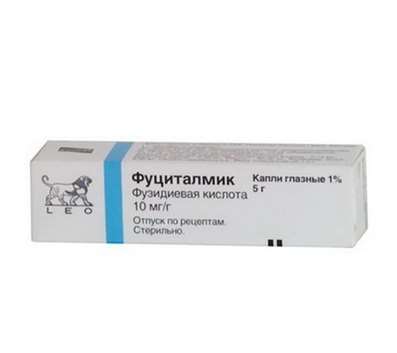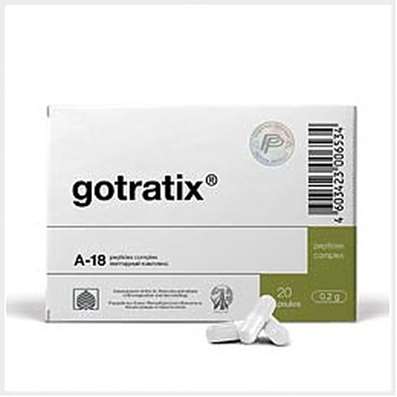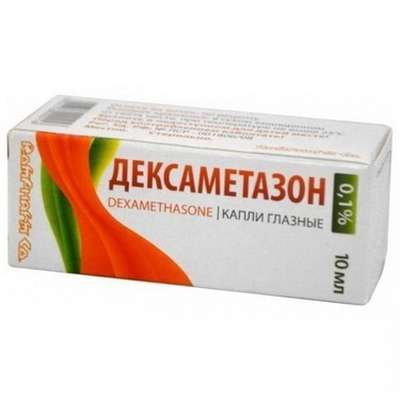Instruction for use: Octreotide Synthesis
I want this, give me price
ATX Code H01CB02 Octreotide
Active substance: Octreotide
Pharmacological group
Somatostatin (synthetic analog) [Hypothalamic hormones, pituitary gland, gonadotropins and their antagonists]
Somatostatin (synthetic analog) [Antitumor hormonal agents and hormone antagonists]
Nosological classification (ICD-10)
I85.0 Varicose veins of the esophagus with bleeding
Bleeding from the esophagus, Bleeding from esophageal varices
K25 Gastric ulcer
Helicobacter pylori, Pain syndrome in gastric ulcer, Pain syndrome in gastric ulcer and duodenal ulcer, Inflammation of the gastric mucosa, Inflammation of the gastrointestinal mucosa, Benign gastric ulcer, The disease of the stomach and duodenum, asotsiirovannoe with Helicobacter pylori, Aggravation gastroduodenita on the background of peptic ulcer, Exacerbation of peptic ulcer, The aggravation of gastric ulcer, The organic gastrointestinal disease, Peptic ulcer of the stomach and duodenum, Postoperative gastric ulcer, Recurrent ulcers, Symptomatic gastric ulcers, Chronic inflammatory disease of the upper gastrointestinal tract, associated with Helicobacter pylori, Helicobacter pylori eradication, Erosive and ulcerative lesions of the stomach, Erosive lesions of the stomach, The erosion of the gastric mucosa, Peptic ulcer disease, Stomach ulcer, Gastric lesion, Ulcerative lesions of the stomach, Symptomatic ulcers of the stomach and duodenum
K26 Duodenal Ulcer
Pain with duodenal ulcer, Pain syndrome in gastric ulcer and duodenal ulcer, The disease of the stomach and duodenum, asotsiirovannoe with Helicobacter pylori, Exacerbation of peptic ulcer, The worsening of duodenal ulcer, Peptic ulcer of the stomach and duodenum, Relapse of duodenal ulcers, Symptomatic ulcers of the stomach and duodenum, Helicobacter pylori eradication, Erosive and ulcerative lesions of the duodenum, Erosive-ulcerative lesions of duodenal ulcers associated with Helicobacter pylori, Erosive lesions of the duodenum, Duodenal ulcer, Ulcerative lesions of the duodenum]
K74 Fibrosis and cirrhosis of the liver
Otecno-ascitic syndrome with cirrhosis of the liver, Inflammatory liver disease, Precircrotic condition, Cystic fibrosis of the liver, Cirrhotic and precircotic state, Cirrhosis with portal hypertension, Cirrhosis of the liver with portal hypertension and edematous-ascitic syndrome, Cirrhosis of the liver with portal hypertension, Cirrhosis of the liver with ascites and edema, Cirrhosis of the liver with ascites, Cirrhotic ascites
K85 Acute pancreatitis
Acute pancreatitis, Pancreatitis, Pancreatitis hemorrhagic, Pancreatitis acute, Sepsis pancreatogenic, Acute necrotic pancreatitis, Pancreatitis edematous
K92.2 Gastro-intestinal bleeding, unspecified
Gastric and intestinal bleeding, Acute bleeding from the upper gastrointestinal tract, gastrorrhagia, Gastrointestinal bleeding, Intraoperative abdominal bleeding, enterorrhagia, Bleeding in the upper digestive tract, Gastrointestinal bleeding, Bleeding from the upper gastrointestinal tract, Bleeding from the gastrointestinal tract, Intraoperative bleeding abdominal, Recurrent bleeding in the digestive tract, Diagnosis of bleeding from the small intestine, peptic ulcer bleeding, Mallory-Weiss syndrome, Recurrent bleeding from peptic ulcers, Bleeding stomach
Z100 * CLASS XXII Surgical practice
Abdominal surgery, adenomectomy, Amputation, Coronary angioplasty, Angioplasty of the carotid arteries, Antiseptic skin treatment for wounds, Antiseptic Hand, Appendectomy, atherectomy, Balloon coronary angioplasty, Vaginal hysterectomy, The coronary bypass, Interventions in the vagina and cervix, Interventions on the bladder, Intervention in the mouth, Restoration and reconstructive surgery, Hand hygiene of medical personnel, Gynecologic surgery, Gynecological intervention, Gynecological surgery, Hypovolemic shock during operations, Disinfection of purulent wounds, Disinfection of wounds edges, Diagnostic intervention, Diagnostic procedures, Cervical Diathermocoagulation, Long-surgery, Replacing the fistula catheters, Infection in orthopedic surgery, Artificial heart valve, cystectomy, Short-term outpatient surgery, Short-term operation, Short surgical procedures, Krikotireotomiya, Blood loss during surgery, Bleeding during surgery and in the postoperative period, Kuldotsentez, laser photocoagulation, laser coagulation, retinal laser coagulation, Laparoscopy, Laparoscopy in Gynecology, CSF fistula, Small gynecological operations, Small surgical procedures, Mastectomy and subsequent plastic, mediastinotomy, Microsurgical operations on the ear, Mukogingivalnye operation, suturing, Minor surgery, neurosurgical operation, Immobilization of the eyeball in ophthalmic surgery, testectomy, pancreatectomy, Perikardektomiya, The period of rehabilitation after surgery, The period of, convalescence after surgery, Percutaneous transluminal coronary angioplasty, Pleural thoracentesis, Pneumonia postoperative and posttraumatic, Preparation for surgical procedures, Preparation for surgery, Preparation of the surgeon's hands before surgery, Preparation of the colon for surgical procedures, Postoperative aspiration pneumonia in neurosurgical and thoracic surgery, Postoperative nausea, Postoperative bleeding, postoperative granuloma, postoperative shock, The early postoperative period, myocardial revascularization, Radiectomy, gastric Resection, bowel resection, uterine Resection, liver Resection, enterectomy, Resection of part of the stomach, Reocclusion of the operated vessel, Bonding tissues during surgical procedures, Removal of sutures, Condition after eye surgery, Condition after surgery, Condition after surgery in the nasal cavity, Condition after gastrectomy, Status after resection of the small intestine, Condition after tonsillectomy, Condition after removal of the duodenum, Condition after phlebectomy, Vascular surgery, Splenectomy, Sterilization of surgical instruments, Sterilization of surgical instruments, sternotomy, Dental surgery, Dental intervention in periodontal tissues, strumectomy, Tonsillectomy, Thoracic surgery, total gastrectomy, Transdermal intravascular coronary angioplasty, Transurethral resection, Turbinektomiya, Removal of a tooth, cataract surgery, Removal of cysts, tonsillectomy, Removal of fibroids, Removing the mobile primary teeth, Removing polyps, Removing broken tooth, Removal of the uterus body, Removal of sutures, Urethrotomy, Fistula likvoroprovodyaschih ways, Frontoetmoidogaymorotomiya, Surgical infection, Surgical treatment of chronic limb ulcersm, Surgery, The surgery in the anal area, The surgery on the colon, Surgical practice, The surgical procedure, Surgical interventions, Surgery on the gastrointestinal tract, Surgical procedures on the urinary tract, Surgical procedures on the urinary system, Surgical intervention of the genitourinary system, Surgical procedures on the heart, Surgical manipulation, surgery, Surgery on the veins, Surgical intervention, Vascular surgery, Surgical treatment of thrombosis, cholecystectomy, Partial gastric resection, transabdominal hysterectomy, Percutaneous transluminal coronary angioplasty, Percutaneous transluminal angioplasty, Coronary artery bypass, tooth Extirpation, Extirpation of milk teeth, pulpectomy, pulsative cardiopulmonary bypass, tooth Extraction, teeth Extraction, cataract extraction, Electrocoagulation, endourological intervention, episiotomy, Etmoidotomiya, Complications after tooth extraction
Z98.8 Other specified poslehirurgicheskie state
Suppurative complications in the postoperative period, Suppurative complications of surgery, Postoperative liver dysfunction, Postoperative vomiting, Postoperative complications, The postoperative period, The early postoperative period
Composition
Solution for intravenous and subcutaneous administration 1 ml
Octreotide 0.05 mg
0.1 mg/ 0.3 mg
Auxiliary substances: sodium chloride - 9 mg; Water for injection - up to 1 ml
Description of dosage form
Clear, colorless, odorless liquid.
pharmachologic effect
The pharmacological action is somatostatin-like.
Pharmacodynamics
Octreotide - synthetic octapeptide, a derivative of the natural hormone somatostatin - has similar pharmacological effects, but with a much longer duration of action. Octreotide inhibits both the pathologically increased secretion of growth hormone (GH) and arginine, physical activity and insulin hypoglycemia. The drug inhibits the secretion of serotonin, gastrin, insulin and glucagon and other peptides produced in the gastroenteropancreatic endocrine system.
In patients undergoing pancreatic surgery, the use of octreotide during and after surgery reduces the incidence of typical postoperative complications (acute postoperative pancreatitis, pancreatic fistula, abscesses, sepsis).
When bleeding from varicose veins of the esophagus and stomach in patients with cirrhosis of the liver, the use of octreotide as part of complex therapy leads to an effective stopping of bleeding, preventing early re-bleeding and improving survival. The mechanism of action of octreotide is associated with a decrease in organ blood flow by suppressing vasoactive hormones (vasoactive intestinal peptide, glucagon).
Pharmacokinetics
After the SC administration, OctreotideŽ FSintez is quickly and completely absorbed. Cmax of the drug in plasma is reached within 30 minutes.
Binding to plasma proteins is 65%. The binding of octreotide with the formed elements of the blood is extremely insignificant. The total clearance is 160 ml / min. Most of the drug is excreted by the intestine, about 32% is excreted unchanged by the kidneys. T1 / 2 after injection of the drug is 100 minutes. After IV introduction, excretion of the drug is carried out in two phases. In elderly patients the clearance decreases, T1 / 2 increases. In severe renal failure, the clearance is halved.
Indications
Prevention and treatment of complications after operations on the pancreas and in the gastroduodenal zone;
Stop bleeding and prevent bleeding from varicose veins of the esophagus in patients with cirrhosis of the liver (as part of complex therapy);
Treatment of acute pancreatitis;
Stop bleeding with peptic ulcer of the stomach and duodenum.
Contraindications
Hypersensitivity to the components of the drug.
With caution: diabetes mellitus; cholelithiasis.
pregnancy and lactation
Adequate and controlled studies have not been conducted. Application during pregnancy and lactation - only in absolute indications, taking into account the risk / benefit ratio, i.e. When the intended benefit to the mother exceeds the estimated risk for the fetus or infant.
Side effects
Local reactions: at the injection site, pain, itching or burning sensation, redness and swelling are possible (usually within 15 minutes).
On the part of the gastrointestinal tract, pancreas, liver and gallbladder: possible - anorexia, nausea, vomiting, abdominal cramps, sensation of bloating, excessive gas formation, loose stools, diarrhea and steatorrhea. Although the release of fat with feces may increase, there is no indication that prolonged treatment with octreotide can lead to the development of malabsorption disorders. In rare cases, there may be phenomena reminiscent of acute intestinal obstruction (progressive bloating, severe pain in the epigastric region, stress of the abdominal wall).
Long-term use of octreotide can lead to the formation of stones in the gallbladder.
There are isolated cases of acute hepatitis without cholestasis (transaminases normalize after octreotide abolition), as well as hyperbilirubinemia in combination with an increase in activity of alkaline phosphatase, GGT, and to a lesser extent other transaminases.
There are isolated reports of rare cases of acute pancreatitis that developed during the first hours or days of octreotide use.
From the CCC: in some cases - tachycardia, bradycardia.
On the part of carbohydrate metabolism: there may be a violation of glucose tolerance after eating (octreotide has a suppressive effect on the formation of GR, glucagon and insulin), hypoglycemia; In rare cases with prolonged treatment, the development of persistent hyperglycemia is possible.
Other: rarely - allergic reactions, alopecia; In some cases - anaphylactic reactions.
Interaction
Octreotide reduces the absorption of cyclosporine, slows the absorption of cimetidine.
It is necessary to adjust the doses of simultaneously used diuretics, β-blockers, BCC, insulin, oral hypoglycemic drugs.
With the simultaneous use of OctreotideŽ Fsintez and bromocriptine, the bioavailability of the latter increases.
Drugs metabolized by enzymes of the cytochrome P450 system and having a narrow therapeutic range of doses should be administered with caution.
Dosing and Administration
In / in (in the form of infusions), sc.
In the treatment of acute pancreatitis OctreotideŽ FSintez is administered SC at a dose of 100 μg 3 times / day for 5-7 days. It is possible to appoint up to 1200 μg / day, the dose selection is based on the determination of the concentration of amylase, lipase, inflammatory blood cytokines.
To prevent complications after operations on the pancreas, the first dose of OctreotideŽ FSintez 100 μg is injected SC 1 h before laparotomy; Then after the operation, enter sc in 100 μg 3 times / day for 7 consecutive days.
To stop bleeding from varicose veins of the esophagus, the drug is administered iv at a dose of 25 mcg / h in the form of continuous infusions for 5 days.
To stop bleeding in peptic ulcer of the stomach and duodenum, it is recommended to introduce OctreotideŽ FSintez in the form of IV infusions at a dose of 25 mcg / h for 5 days.
Patients with advanced age do not need to reduce the dose of OctreotideŽ FSintez.
Patients with impaired renal function are not required to adjust the dosage regimen of octreotide.
Correction of the maintenance dose is recommended for patients with impaired liver function, because There is evidence of an increase in T1 / 2 octreotide in patients with cirrhosis of the liver.
The experience with octreotide in children is very limited.
Rules for the preparation and administration of a solution
To reduce the effects of discomfort at the injection site, the OctreotideŽ Phinthesis solution should be at room temperature before administration. When injecting the drug, several injections should be avoided at the same place at short intervals. Ampoules with the drug should be opened immediately before administration, unused amount of solution must be destroyed.
Before / in the use of the drug should carefully inspect the solution and ensure its transparency, the absence of suspended particles, sediment, discoloration. Do not use the drug if it is cloudy, contains suspended particles, sediment.
The prepared OctreotideŽ Phinthesis solution retains physical and chemical stability at a temperature of 8 to 25 ° C for 24 hours. To avoid microbial contamination, diluted solutions should be used immediately after preparation. If the solution is not used immediately, it should be stored at a temperature of 2 to 8 ° C until its use.
Before use, the solution should be kept at room temperature.
The total time between dilution, storage in the refrigerator and the end of the administration of the solution should not exceed 24 hours.
Preparation of a solution for iv drip
The contents of one ampoule containing 500 μg octreotide, diluted in 60 ml of 0.9% sodium chloride solution. Infusions are repeated at the required frequency in accordance with the recommended duration of treatment. Octreotide can also be administered at lower concentrations.
Overdose
It is known that the administration of octreotide in a dose of up to 2000 micrograms in the form of SC injection 3 times for several months was well tolerated.
Symptoms: The maximum single dose for an IV bolus injection to an adult patient was 1000 μg. Symptoms such as a decrease in heart rate, a flush of blood to the face, abdominal pain of a spastic nature, diarrhea, nausea, a feeling of emptiness in the stomach were noted. All these symptoms resolved within 24 hours of the administration of the drug. One patient was mistakenly injected with an excess dose of octreotide 250 μg / h (instead of 25 μg / h) by prolonged infusion, which was not accompanied by side effects. In acute overdose, there were no life-threatening reactions.
Treatment: symptomatic therapy.
special instructions
In patients with type 1 diabetes (receiving insulin), octreotide may reduce the need for insulin.
In patients without a violation of carbohydrate metabolism and patients with type 2 diabetes mellitus, administration of the drug may lead to postprandial glycemia. Patients with diabetes mellitus on the background of hypoglycemic therapy are advised to monitor the concentration of glucose in the blood.
In some patients, octreotide can alter the absorption of fats in the intestine. Against the background of the use of octreotide, a decrease in the content of cyanocobalamin (vitamin B12) and a deviation from the norm of the cyanocobalamin absorption test (Shilling test).
In patients with a history of vitamin B12 deficiency, the use of octreotide is recommended to monitor the content of cyanocobalamin.
If bradycardia develops with the use of octreotide, it is necessary to reduce the doses of β-adrenoblockers, BCC, drugs that affect the water-electrolyte balance.
Before the appointment of octreotide, patients should undergo an initial ultrasound of the gallbladder. If gallstones are detected before starting treatment, the question of the use of OctreotideŽ FSintez is decided individually, depending on the ratio of the potential therapeutic effect of the drug to the possible risk factors associated with the presence of gallstones. During treatment with octreotide, ultrasound of the gallbladder should be performed, with an interval of 6-12 months.
Management of patients whose gallstones are formed during treatment with octreotide
Asymptomatic stones of the gallbladder. The use of octreotide can be discontinued or continued - according to the benefit / risk ratio estimate. In any case, no other measures are required, except to continue inspections, making them, if necessary, more frequent.
Stones of the gallbladder with clinical symptoms. The use of octreotide can be discontinued or continued - according to the benefit / risk ratio estimate. In any case, the patient should be treated in the same way as in other cases of cholelithiasis with clinical manifestations.
Gastrointestinal side effects can be reduced if OctreotideŽ FS Synthesis is administered in the intervals between meals or at bedtime.
It is necessary to correct the dosage regimen of concomitant diuretics, β-blockers, BCC, insulin, oral hypoglycemic agents, glucagon.
Impact on the ability to drive and other vehicles, to work with moving mechanisms. To date, there is no evidence of the effect of octreotide on the ability to drive a car and work with mechanisms.
Form of issue
Solution for intravenous and subcutaneous administration, 50 μg / ml, 100 μg / ml, 300 μg / ml. 1 ml in neutral glass ampoules; It is possible to use ampoules with a tension ring for opening or a break point. At 5 amp. In a contoured cell pack of PVC film.
1 or 2 contoured cell packs, ampoule opener or ampoule scarifier are placed in a cardboard box.
When you pack the solution into ampoules that have a tension ring for dissection, or an ampoule with a fracture point, a knife or ampoule scapegrator is not inserted.
Terms of leave from pharmacies
On prescription.
Storage conditions
In dry, the dark place at a temperature of no higher than 25 ° C. (Do not freeze).
Keep out of the reach of children.
Shelf life
2 years.
Do not use after the expiry date printed on the package.

 Cart
Cart





